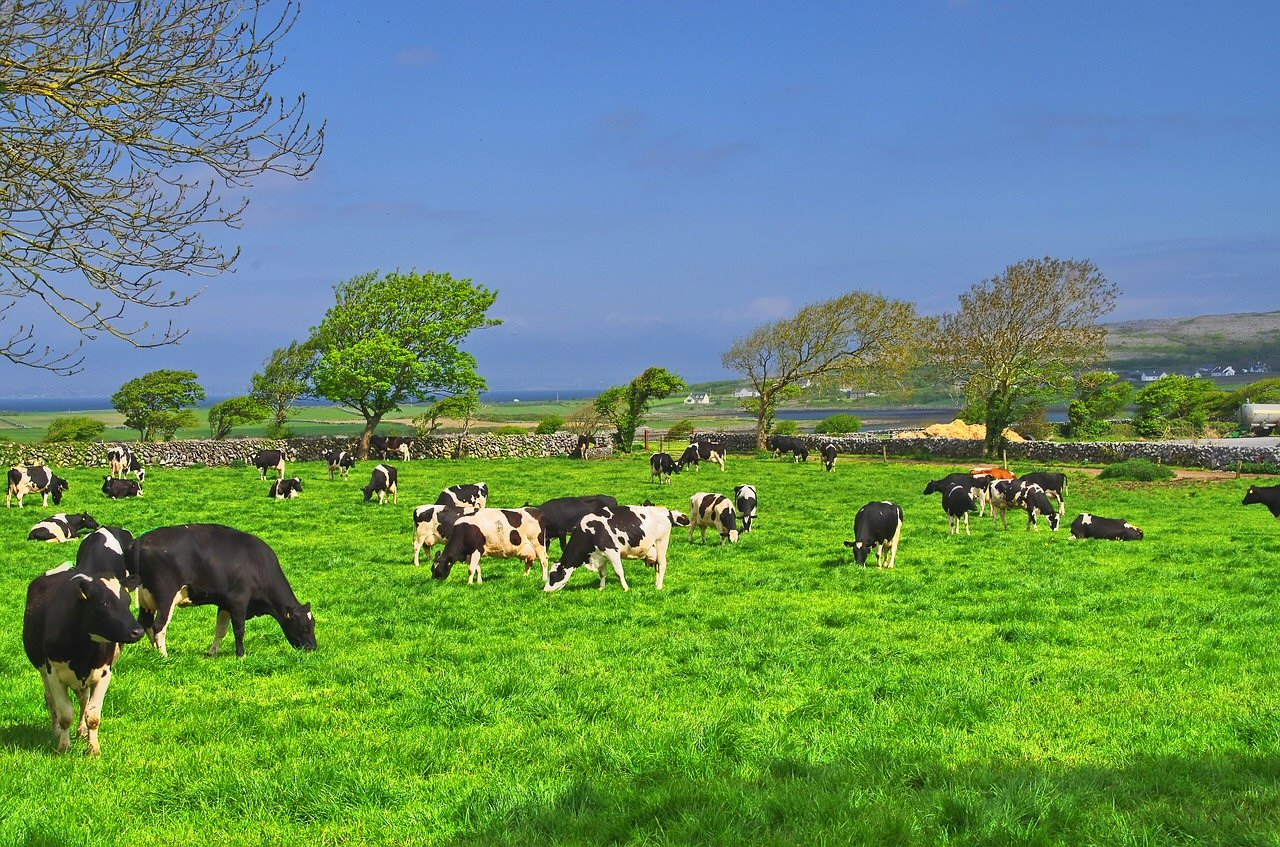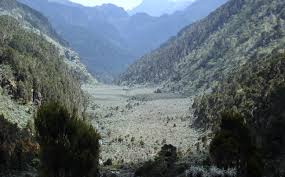The newly established European Scientific Advisory Board on Climate Change (ESABCC) first made its mark when delivering its advice to the Commission in July 2023 on setting the EU’s 2040 mitigation target. It recommended emission reductions of 90–95% by 2040 relative to 1990. The Commission Communication proposing its climate target will be published on 6 February 2024. It is expected to propose a reduction target in net emissions of at least 90% in line with the recommendation of the Advisory Board. This is the target to which the new Climate Commissioner Wopke Hoekstra committed in his appointment hearing before the Parliament’s Environment Committee in October last year.… Read the rest
EU agricultural emissions trends in comparative perspective
The EU sees itself as a global leader in climate action. The UN Framework Convention on Climate Change (UNFCCC) was agreed in 1992. Since then, the EU has had quantitative emissions reduction targets for the period 2008-2012 under the Kyoto Protocol (a reduction of 8% compared to 1990 levels) and for the period 2013-2020 (under both the Kyoto Protocol and the 20-20-20 by 2020 Climate and Energy Package) which committed to a reduction of 20% in greenhouse gas (GHG) emissions by 2020 relative to 1990.
How have agricultural emissions trended during this period in the EU compared to other Annex 1 parties (developed countries) to the UNFCCC?… Read the rest
Measuring food system emissions
A paper just published in Nature Food by researchers from the EU Joint Research Centre (JRC) and FAO has for the first time provided a consistent database of food system greenhouse gas (GHG) emissions globally and for every country with yearly frequency for the period 1990-2015. The authors justifiably claim that it represents a milestone in our understanding of how the global food system has developed. This post looks at some of the main messages provided by the paper.
It is first important to understand what the data are measuring. Although they cover food system emissions, these data are not consumption-based food system emission estimates or footprints.… Read the rest
Climate measures in Irish agriculture
Today, I made an online presentation to a virtual workshop jointly organised by MAREI, the Marine and Renewable Energy Ireland centre at University College Cork and the Economic and Social Research Institute, Dublin on climate and energy policy research. The talk discussed measures in agriculture to reduce Irish agriculture’s greenhouse gas footprint in the context of the country’s policy goals for climate stabilisation. Below is a transcript of the talk.
Agriculture is the single largest contributor to Ireland’s greenhouse gas emissions, accounting for 34% of total national emissions in 2018, but 46% of the emissions that are limited by the EU Effort Sharing Decision.… Read the rest
Climate mainstreaming the CAP in the EU budget: fact or fiction
Climate mainstreaming of the EU budget was introduced in the Commission’s Multiannual Financial Framework (MFF) proposal for the period 2014-2020 which first put forward the idea that “the optimal achievement of objectives in some policy areas – including climate action, environment, consumer policy, health and fundamental rights – depends on the mainstreaming of priorities into a range of instruments in other policy areas” (COM(2011)500). The Commission advocated in particular that the EU budget could play an important role in catalysing the specific investments needed to meet the EU’s climate targets and to ensure climate resilience.
The policy fiche on climate action in the Annex to the 2011 MFF proposal included the idea that the proportion of EU budget spending contributing to the EU’s transition to a low carbon and climate resilient society should be increased to at least 20%, subject to impact assessment evidence.… Read the rest
Long-run perspective on EU agricultural output growth and GHG emissions
The extent to which agricultural growth can take place while at the same time reducing agricultural greenhouse gas (GHG) emissions is much debated. There is a widespread view, reflected in the agricultural mitigation chapter of the IPCC’s Fifth Assessment Report in 2014, that changes in food consumption patterns will be necessary if GHG emissions from global agricultural production are to fall sufficiently to help to stabilise the climate by 2050. The diet changes proposed, including a shift away from meat and dairy product consumption, would deliver emissions reductions by reducing agricultural production. Others point instead to the potential of technological advances to reconcile increased agricultural output with lower emissions, effectively allowing the decoupling of emissions growth from agricultural growth.… Read the rest
Climate policy in agriculture and carbon leakage
Efforts to reduce greenhouse gas emissions in a single country will usually lead to increased emissions in other countries – a phenomenon called carbon leakage (for simplicity, I will use the term carbon leakage although the same outcome also applies to other greenhouse gases). Various mechanisms contribute to this effect:
- If climate policy increases production costs, this will reduce the competitiveness of domestic production relative to countries without or with a laxer climate policy. Consumers will shift their purchasing to the cheaper imported alternatives. The effect will be that some emissions-producing production will shift to third countries with the laxer climate policy – the competitiveness channel.
The GHG emissions challenge for agriculture
Agricultural greenhouse gas (GHG) emissions in the EU-28 have flat-lined since 2005 (see chart below). They fell slightly between 2005 and 2012 and have been increasing since then. In 2016, the agricultural sector was responsible for 430 million tonnes of GHG emissions in CO2 equivalents (CO2eq) compared to 434 million tonnes in 2005. This relative stability is due, I suspect, to a slow improvement in emissions intensity per unit of output offset by increased levels of output. The increase since 2012 is likely mainly associated with the removal of dairy quotas in 2015 which has allowed an expansion in the dairy herd in some countries, though these speculative hypotheses should be subject to more rigorous analysis.… Read the rest
How to improve the CAP’s environmental performance post 2020
We are pleased to welcome this guest post by Faustine Bas-Defossez, IEEP Head of agriculture and land management program, and Kaley Hart, IEEP Senior fellow, who summarise the findings of a recent IEEP report CAP 2021-27: Proposals for increasing its environmental and climate ambition.
Although the CAP is the key EU funding mechanism to support environmental and climate action in the EU agricultural and forest sectors, efforts so far to green this strategic policy have not been sufficient to outweigh the pressures facing the farmed environment. As the EU just published its long term strategy for a climate neutral economy, emissions of greenhouse gasses from agriculture, including the livestock sector, are stubbornly high.… Read the rest
The Article 92 commitment to increased ambition with regard to environmental- and climate-related objectives
Article 92 of the draft CAP Strategic Plan regulation is headed “Increased ambition with regard to environmental- and climate-related objectives”. In my previous discussion of the proposed green architecture in the CAP post 2020, I interpreted this Article as a commitment to no back-sliding on expenditure on agri-environment and climate objectives in the new CAP. For this reason, I took a more positive view of the potential of the new legislation to live up to the Commission’s declared ambition in this area than reflected in initial statements from environmental NGOs.
In the wake of further conversations with Birdlife Europe who have had the benefit of discussions with DG AGRI officials, I conclude that my initial interpretation of Article 92 as guaranteeing no back-sliding in expenditure was incorrect.… Read the rest










